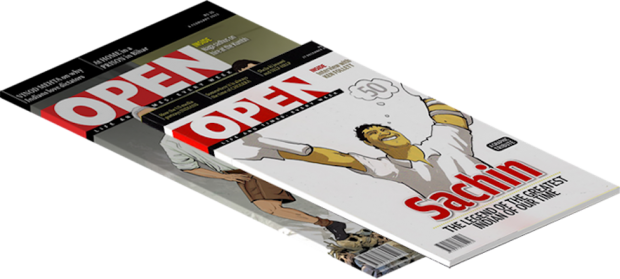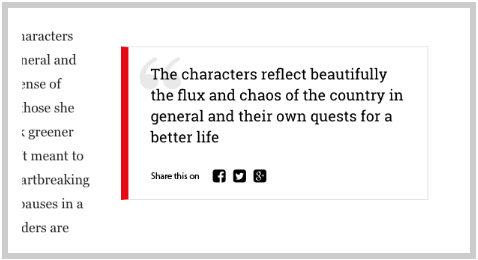 Support for Drupal 7 is ending on 5 January 2025—it’s time to migrate to Drupal 10! Learn about the many benefits of Drupal 10 and find migration tools in our resource center.
Support for Drupal 7 is ending on 5 January 2025—it’s time to migrate to Drupal 10! Learn about the many benefits of Drupal 10 and find migration tools in our resource center.OPEN Magazine, a weekly current affairs and features magazine, is the flagship brand of OPEN Media Network. The magazine captures the political, economic and cultural spirit of India. Through its narrative journalism, OPEN gives its readers a fresh perspective, enabling them to make informed decisions.
To utilize the website as a marketing vehicle that would help acquire prospective readers & subscriptions, OPEN contracted Srijan to develop a new site in Drupal 8, that portrayed the value of genuine information and how OPEN is different from other media houses.

OPEN was working with the objective of getting more users on the website. Their Drupal 6 site needed a facelift as it was more than six years old. They wanted a new site with contemporary design sensibilities, and simpler user experience. They were looking to build a site that showcased the diversity of their work, in terms of features and articles. Technically, they also needed a platform that allowed their team to easily edit and manage content.
There was a debate in Srijan around whether to move to Drupal 7 or skip it to move to Drupal 8 directly. This was the time when Drupal 8 had just arrived on the scene with its release candidate (drupal 8.0.0-rc1) in October 2015. Many modules were not supported. Neither were our devs proficient in Drupal 8 as compared to their proficiency in Drupal 7. However there were still a lot of factors that helped us making a decision in favor of Drupal 8. Here is what we presented as an argument
- The site was simple enough which meant that the dependency on the user contributed modules was less.
- The custom modules written in Drupal 6 site anyway needed to be ported/written again. We decided to do them in Drupal 8 rather than in Drupal 7
- We knew we would need some user contributed modules but it made better sense if we did this in Drupal 8. We knew we might run into issues, but we explained the same to the client and he was willing to be patient
- The migration, as we were given to understand, was a much simpler and mess-free process when done from Drupal 6 to Drupal 8 than from Drupal 6 to Drupal 7.
- Drupal 8 has been written from grounds up. This meant that it has enhanced security and better page load times
- The caching system is much better in Drupal 8 as compared to Drupal 7
With these arguments , our client was also convinced that Drupal 8 would provide them with the desired flexibility to add and manage content in a secure manner. They were willing to invest in any additional efforts that the technical team might need to research on a particular functionality or in simply implementing it in Drupal 8.
Content Structure: OPEN’s primary aim while redesigning the website was to provide a good user experience to their existing and new customers. To ensure that, we used the ‘Views module’ which let us create, display and sort all the latest content according to the different categories. Views module provided the flexibility to query the site's content and display it in a block, table, page or in any other format that we wanted to have.
Data Migration: There was a lot of data that was available on the older site, which needed to be migrated to the new site. There were about 30,000 content items which were to be moved. We used Migration API to move data (schema) from the old Drupal 6 site to the new Drupal 8 site. Incremental migration by custom scripts was performed after schema migration was tested. It came in handy that we had a lot of experience in migration from our previous endeavors/projects.
Content Creation and Visibility: Being a media website, smooth content creation and management was a prerequisite for OPEN. We used the CKEditor module which allows for simplified and faster website content creation. It is a WYSIWYG (What You See Is What You Get) editor, which means that text edited in it looks as close as possible to the end result that users would see after the document is published.
For indexing and search, we used the ‘Solr Search’ module, which offers an implementation of the Search API that uses an Apache Solr server for indexing content.
User Experience:
We built custom functionality for some of the modules to support a better user experience and design for the following:
- Doubleclick for Publishers (DFP) - The DFP module integrates Google Publisher Tags (GPT) as supported by the new Doubleclick for Publishers (DFP). We built this to provide an interface to the client to upload third party ads.
- Entity Queue - Drupal 8 did not yet have Nodequeue module available and we could not afford to spend time in porting it in Drupal 8. We needed another way to enable our client to put content in queues and publish them as a list. We found out that entityqueue was the closest we could get at that point in time. However it supported only ONE content type at a time. It also could not be edited once created. We fixed the latter and extended the capability to allow the feature of multi-content types.
- Field Collection Module - We used field collection in Gallery content type. Client wanted
- to have the related story being entered for each image in the gallery/video upload. To meet this requirement, we implemented the field collection module. This meant, we could upload an image to be the part of the gallery and alongwith each image we could also provide an internal link that could take the user to the “related story”
- Blockquotes - The module originally intended to provide a blockquote feature within the content that can be styled differently. We extended the module to share the custom blockquotes inside each article. A lot of users want to share the snippets of content instead of jusr the URL/headline. This feature was a step in that direction. Users can now share quotes on Twitter, Facebook and Google+

- Subscription – We used the subscription module to secure the user experience. Users are now notified of new changes that takes place on the website, whether it is in the forum section or a new category addition to the blog. Apart from buying the magazine subscription, he can subscribe to the digital experience via RSS feeds or e-mags.
Technical specifications
Views - We used Views for making the listing pages across the site. These included landing pages for Voices, Essays, Columns, and Features. Views was also used for creating view blocks used across the site, like slider blocks on Homepage, and the Featured blocks.
Migration - Provides Drupal Migration APIs, which were used in migrating data from D6 site. A lot of migration was done using custom scripts, though wherever required, we also kept track of regularly incrementing data.
CKEditor - We gave content editors the ability to do visibility changes with the content they uploaded, by using CKE content styling that can be changed, making it bold-italics, textsize changes, inline editing, alignment etc.
Solr Search - We implemented OPEN Search using Solr Search. This module provides Solr APIs which are integrated with apache server to search content. The searched content is kept in indexed form which facilitates quick search, mainly used when there is a humongous amount of content.
Configuration Manager - This was used to deploy changes from developmental to production environments safely by exporting and importing settings in the form of configurations.
Custom Block - We implemented open block like columns, open avenues, open specials, and highlights blocks making use of drupal hooks. It involved crafting custom modules for project specific requirements, using drupal hooks.
Field - We implemented content adding, loading and storage by providing fields to content writers. These will be used as data carriers to save entered inputs to database, load them while browsing and allow editing. Field API ensured that the defined data structure is followed. We also attached fields in collections. Fields involved text fields, image fields, referenced fields, and select fields which were used to input data in various forms.
Quick Edit - Provides quick inline editing improving user experience on mobile devices.
RDF - Enriches content with metadata to let other applications (e.g. search engines, aggregators) better understand its relationships and attributes.
Ctools- Used as a dependency for Views Module. Ctools works in collaboration with Views to build pages. Ctools is a module suite that contains the ‘page manager’ module whose job is to manage pages, and contains tools like exportables which provides export interfaces, content wrappers for accepting content inputs and various wizards.
Doubleclick for Publishers (DFP)- DFP module provides an interface to DFP which is an advertisement software application run by Google. However, we had to customize it as the module wasn't complete for the D8 version.
We used Pantheon as the development server and the hosting server.
Srijan, today, is the largest pure-play Drupal company in Asia. It specializes in building high-traffic websites and complex web applications in Drupal, while crafting seamless user experiences, driven by a deep understanding of businesses and their users. Srijan, an Acquia Enterprise Partner, has been serving clients across USA, Asia, Europe, Australia and the Middle East.
Comments
Is no more
Open Magazine has shifted to wordpress, it is no more on Drupal, so I think, it should be removed from the showcases.